Transformative Role of Artificial Intelligence in Advancing Sustainable Tomato (Solanum lycopersicum) Disease Management for Global Food Security: A Comprehensive Review
Abstract
1. Introduction
2. Theoretical Background
3. Methodology
3.1. Identification of Relevant Articles
3.2. Inclusion and Exclusion Criteria
3.3. Screening and Data Extraction
3.4. Data Analysis
3.5. Article Screening Summary
4. Details about Tomato Diseases
5. Datasets for Tomato Leaf Diseases
6. Algorithms Used for Classification
7. Features Used by Algorithms
7.1. Texture Features
7.2. Color Features
7.3. Shape Features
7.4. Deep Learning Features
8. Discussion on Challenges and Trends
8.1. Challenges
8.1.1. Similarity of Symptoms
8.1.2. Differences in Plant Growth Stages
8.1.3. Environmental Noise
8.1.4. Limited Dataset
8.1.5. Imbalanced Data
8.2. Trends
8.2.1. Deep Learning
8.2.2. Transfer Learning
8.2.3. Ensemble Learning
9. Conclusions
Author Contributions
Funding
Institutional Review Board Statement
Informed Consent Statement
Data Availability Statement
Conflicts of Interest
References
- Li, L.; Zhang, S.; Wang, B. Plant Disease Detection and Classification by Deep Learning—A Review. IEEE Access 2021, 9, 56683–56698. [Google Scholar] [CrossRef]
- Hariharan, J.; Ampatzidis, Y.; Abdulridha, J.; Batuman, O. An AI-based spectral data analysis process for recognizing unique plant biomarkers and disease features. Comput. Electron. Agric. 2023, 204, 107574. [Google Scholar] [CrossRef]
- Sahu, S.K.; Pandey, M. An optimal hybrid multiclass SVM for plant leaf disease detection using spatial Fuzzy C-Means model. Expert Syst. Appl. 2023, 214, 118989. [Google Scholar] [CrossRef]
- Ahmed, I.; Yadav, P.K. A systematic analysis of machine learning and deep learning based approaches for identifying and diagnosing plant diseases. Sustain. Oper. Comput. 2023, 4, 96–104. [Google Scholar] [CrossRef]
- Szegedy, C.; Liu, W.; Jia, Y.; Sermanet, P.; Reed, S.; Anguelov, D.; Erhan, D.; Vanhoucke, V.; Rabinovich, A.; Liu, W.; et al. Going deeper with convolutions. In Proceedings of the 2015 IEEE Conference on Computer Vision and Pattern Recognition (CVPR), Boston, MA, USA, 7–12 June 2015; pp. 1–9. [Google Scholar] [CrossRef]
- Krizhevsky, A.; Sutskever, I.; Hinton, G.E. Imagenet classification with deep convolutional neural networks. Commun. ACM 2017, 60, 84–90. [Google Scholar] [CrossRef]
- Mohanty, S.P.; Hughes, D.P.; Salathé, M. Using Deep Learning for Image-Based Plant Disease Detection. Front. Plant Sci. 2016, 7, 1419. [Google Scholar] [CrossRef] [PubMed]
- Fuentes, A.; Yoon, S.; Kim, C.S.; Park, S.D. A Robust Deep-Learning-Based Detector for Real-Time Tomato Plant Diseases and Pests Recognition. Precis. Agric. 2017, 17, 2022. [Google Scholar] [CrossRef]
- Ren, S.; He, K.; Girshick, R.; Sun, J. Faster R-CNN: Towards real-time object detection with region proposal networks. IEEE Trans. Pattern Anal. Mach. Intell. 2017, 39, 1137–1149. [Google Scholar] [CrossRef]
- Dai, J.; Li, Y.; He, K.; Sun, J. R-FCN: Object Detection via Region-based Fully Convolutional Networks. In Advances in Neural Information Processing Systems 29 (NIPS 2016); Curran Associates Inc.: Red Hook, NY, USA, 2016; pp. 379–387. [Google Scholar]
- Li, M.; Zhou, G.; Chen, A.; Li, L.; Hu, Y. Identification of tomato leaf diseases based on LMBRNet. Eng. Appl. Artif. Intell. 2023, 123, 106195. [Google Scholar] [CrossRef]
- Sunil, C.K.; Jaidhar, C.D.; Patil, N. Tomato plant disease classification using Multilevel Feature Fusion with adaptive channel spatial and pixel attention mechanism. Expert Syst. Appl. 2023, 228, 120381. [Google Scholar] [CrossRef]
- Sanida, T.; Sideris, A.; Sanida, M.V.; Dasygenis, M. Tomato leaf disease identification via two–stage transfer learning approach. Smart Agric. Technol. 2023, 5, 100275. [Google Scholar] [CrossRef]
- Huang, J.; Rathod, V.; Sun, C.; Zhu, M.; Korattikara, A.; Fathi, A.; Fischer, I.; Wojna, Z.; Song, Y.; Guadarrama, S.; et al. Speed/accuracy trade-offs for modern convolutional object detectors. In Proceedings of the 30th IEEE Conference on Computer Vision and Pattern Recognition, Honolulu, HI, USA, 21–26 July 2016; pp. 3296–3305. [Google Scholar]
- D’amore, G.; Di Vaio, A.; Balsalobre-Lorente, D.; Boccia, F. Artificial Intelligence in the Water–Energy–Food Model: A Holistic Approach towards Sustainable Development Goals. Sustainability 2022, 14, 867. [Google Scholar] [CrossRef]
- Simonyan, K.; Zisserman, A. Very Deep Convolutional Networks for Large-Scale Image Recognition. arXiv 2014, arXiv:1409.1556. [Google Scholar]
- Ferentinos, K.P. Deep learning models for plant disease detection and diagnosis. Comput. Electron. Agric. 2018, 145, 311–318. [Google Scholar] [CrossRef]
- Fuentes, A.F.; Yoon, S.; Lee, J.; Park, D.S. High-Performance Deep Neural Network-Based Tomato Plant Diseases and Pests Diagnosis System with Refinement Filter Bank. Front. Plant Sci. 2018, 9, 1162. [Google Scholar] [CrossRef]
- Kumar, S.K.P.; Sumithra, M.G.; Saranya, N. Artificial bee colony-based fuzzy c means (ABC-FCM) segmentation algorithm and dimensionality reduction for leaf disease detection in bioinformatics. J. Supercomput. 2019, 75, 8293–8311. [Google Scholar] [CrossRef]
- Howard, A.G.; Zhu, M.; Chen, B.; Kalenichenko, D.; Wang, W.; Weyand, T.; Andreetto, M.; Adam, H. MobileNets: Efficient Convolutional Neural Networks for Mobile Vision Applications. arXiv 2017, arXiv:1704.04861. [Google Scholar]
- Kc, K.; Yin, Z.; Wu, M.; Wu, Z. Depthwise separable convolution architectures for plant disease classification. Comput. Electron. Agric. 2019, 165, 104948. [Google Scholar] [CrossRef]
- Geetharamani, G.; Arun Pandian, J. Identification of plant leaf diseases using a nine-layer deep convolutional neural network. Comput. Electr. Eng. 2019, 76, 323–338. [Google Scholar] [CrossRef]
- Basavaiah, J.; Anthony, A.A. Tomato Leaf Disease Classification using Multiple Feature Extraction Techniques. Wirel. Pers. Commun. 2020, 115, 633–651. [Google Scholar] [CrossRef]
- Chen, X.; Zhou, G.; Chen, A.; Yi, J.; Zhang, W.; Hu, Y. Identification of tomato leaf diseases based on combination of ABCK-BWTR and B-ARNet. Comput. Electron. Agric. 2020, 178, 105730. [Google Scholar] [CrossRef]
- Karthik, R.; Hariharan, M.; Anand, S.; Mathikshara, P.; Johnson, A.; Menaka, R. Attention embedded residual CNN for disease detection in tomato leaves. Appl. Soft Comput. 2019, 86, 105933. [Google Scholar] [CrossRef]
- Li, Z.; Yang, Y.; Li, Y.; Guo, R.; Yang, J.; Yue, J. A solanaceae disease recognition model based on SE-Inception. Comput. Electron. Agric. 2020, 178, 105792. [Google Scholar] [CrossRef]
- Tan, L.; Lu, J.; Jiang, H. Tomato Leaf Diseases Classification Based on Leaf Images: A Comparison between Classical Machine Learning and Deep Learning Methods. Agriengineering 2021, 3, 542–558. [Google Scholar] [CrossRef]
- Tan, M.; Le, Q.V. EfficientNet: Rethinking Model Scaling for Convolutional Neural Networks. arXiv 2019, arXiv:1905.11946. [Google Scholar]
- He, K.; Zhang, X.; Ren, S.; Sun, J. Deep residual learning for image recognition. In Proceedings of the IEEE Computer Society Conference on Computer Vision and Pattern Recognition (CVPR), Las Vegas, NV, USA, 27–30 June 2016; pp. 770–778. [Google Scholar] [CrossRef]
- Sandler, M.; Howard, A.; Zhu, M.; Zhmoginov, A.; Chen, L. MobileNetV2: Inverted Residuals and Linear Bottlenecks. In Proceedings of the 2018 IEEE Conference on Computer Vision and Pattern Recognition, Salt Lake City, UT, USA, 18–22 June 2018; pp. 4510–4520. [Google Scholar] [CrossRef]
- Peker, M. Multi-channel capsule network ensemble for plant disease detection. SN Appl. Sci. 2021, 3, 707. [Google Scholar] [CrossRef]
- Wang, D.; Wang, J.; Ren, Z.; Li, W. DHBP: A dual-stream hierarchical bilinear pooling model for plant disease multi-task classification. Comput. Electron. Agric. 2022, 195, 106788. [Google Scholar] [CrossRef]
- Yu, S.; Xie, L.; Huang, Q. Inception convolutional vision transformers for plant disease identification. Internet Things 2023, 21, 100650. [Google Scholar] [CrossRef]
- Roy, C.K.; Akter, N.; Sarkar, M.K.; Pk, M.U.; Begum, N.; Zenat, E.A.; Jahan, M.A. Control of Early Blight of Tomato Caused by Alternaria solani and Screening of Tomato Varieties against the Pathogen. Open Microbiol. J. 2019, 13, 41–50. [Google Scholar] [CrossRef]
- Jones, J.B.; Zitter, T.A.; Momol, T.M.; Miller, S.A. PART I: Infectious Diseases. In Compendium of Tomato Diseases and Pests, 2nd ed.; APS Publications: St. Paul, MN, USA, 2016. [Google Scholar] [CrossRef]
- Mulugeta, T.; Abreha, K.; Tekie, H.; Mulatu, B.; Yesuf, M.; Andreasson, E.; Liljeroth, E.; Alexandersson, E. Phosphite protects against potato and tomato late blight in tropical climates and has varying toxicity depending on the Phytophthora infestans isolate. Crop. Prot. 2019, 121, 139–146. [Google Scholar] [CrossRef]
- Summers, C.F.; Park, S.; Dunn, A.R.; Rong, X.; Everts, K.L.; Kleinhenz, M.D.; Gardener, B.M.; Smart, C.D. Fungal and oomycete pathogen detection in the rhizosphere of organic tomatoes grown in cover crop-treated soils. Appl. Soil Ecol. 2014, 80, 44–50. [Google Scholar] [CrossRef]
- Príncipe, A.; Fernandez, M.; Torasso, M.; Godino, A.; Fischer, S. Effectiveness of tailocins produced by Pseudomonas fluorescens SF4c in controlling the bacterial-spot disease in tomatoes caused by Xanthomonas vesicatoria. Microbiol. Res. 2018, 212–213, 94–102. [Google Scholar] [CrossRef] [PubMed]
- Pozharskiy, A.; Kostyukova, V.; Taskuzhina, A.; Nizamdinova, G.; Kisselyova, N.; Kalendar, R.; Karimov, N.; Gritsenko, D. Screening a collection of local and foreign varieties of Solanum lycopersicum L. in Kazakhstan for genetic markers of resistance against three tomato viruses. Heliyon 2022, 8, e10095. [Google Scholar] [CrossRef] [PubMed]
- Sade, D.; Sade, N.; Brotman, Y.; Czosnek, H. Tomato yellow leaf curl virus (TYLCV)-resistant tomatoes share molecular mechanisms sustaining resistance with their wild progenitor Solanum habrochaites but not with TYLCV-susceptible tomatoes. Plant Sci. 2020, 295, 110439. [Google Scholar] [CrossRef]
- Zhao, T.; Pei, T.; Jiang, J.; Yang, H.; Zhang, H.; Li, J.; Xu, X. Understanding the mechanisms of resistance to tomato leaf mold: A review. Hortic. Plant J. 2022, 8, 667–675. [Google Scholar] [CrossRef]
- Osman, M.A.; Al Dhafar, Z.M.; Alqahtani, A.M. Biological responses of the two-spotted spider mite, Tetranychus urticae to different host plant. Arch. Phytopathol. Plant Prot. 2019, 52, 1229–1238. [Google Scholar] [CrossRef]
- Sahu, P.K.; Singh, S.; Gupta, A.; Singh, U.B.; Brahmaprakash, G.; Saxena, A.K. Antagonistic potential of bacterial endophytes and induction of systemic resistance against collar rot pathogen Sclerotium rolfsii in tomato. Biol. Control 2019, 137, 104014. [Google Scholar] [CrossRef]
- Hughes, D.P.; Salathe, M. An open access repository of images on plant health to enable the development of mobile disease diagnostics. arXiv 2015, arXiv:1511.08060. [Google Scholar]
- Singh, D.; Jain, N.; Jain, P.; Kayal, P.; Kumawat, S.; Batra, N. PlantDoc: A Dataset for Visual Plant Disease Detection. arXiv 2019, arXiv:1911.10317. [Google Scholar] [CrossRef]
- Abbas, A.; Jain, S.; Gour, M.; Vankudothu, S. Tomato plant disease detection using transfer learning with C-GAN synthetic images. Comput. Electron. Agric. 2021, 187, 106279. [Google Scholar] [CrossRef]
- Albahli, S.; Nawaz, M. DCNet: DenseNet-77-based CornerNet model for the tomato plant leaf disease detection and classification. Front. Plant Sci. 2022, 13, 957961. [Google Scholar] [CrossRef]
- Vadivel, T.; Suguna, R. Automatic recognition of tomato leaf disease using fast enhanced learning with image processing. Acta Agric. Scand. Sect. B Soil Plant Sci. 2021, 72, 312–324. [Google Scholar] [CrossRef]
- Zhao, S.; Peng, Y.; Liu, J.; Wu, S. Tomato Leaf Disease Diagnosis Based on Improved Convolution Neural Network by Attention Module. Agriculture 2021, 11, 651. [Google Scholar] [CrossRef]
- Zhao, Y.; Sun, C.; Xu, X.; Chen, J. RIC-Net: A plant disease classification model based on the fusion of Inception and residual structure and embedded attention mechanism. Comput. Electron. Agric. 2022, 193, 106644. [Google Scholar] [CrossRef]
- Nandhini, S.; Ashokkumar, K. Improved crossover based monarch butterfly optimization for tomato leaf disease classification using convolutional neural network. Multimed. Tools Appl. 2021, 80, 18583–18610. [Google Scholar] [CrossRef]
- Gadekallu, T.R.; Rajput, D.S.; Reddy, M.P.K.; Lakshmanna, K.; Bhattacharya, S.; Singh, S.; Jolfaei, A.; Alazab, M. A novel PCA–whale optimization-based deep neural network model for classification of tomato plant diseases using GPU. J. Real-Time Image Process. 2020, 18, 1383–1396. [Google Scholar] [CrossRef]
- Wspanialy, P.; Moussa, M. A detection and severity estimation system for generic diseases of tomato greenhouse plants. Comput. Electron. Agric. 2020, 178, 105701. [Google Scholar] [CrossRef]
- Hassan, S.M.; Maji, A.K. Deep feature-based plant disease identification using machine learning classifier. Innov. Syst. Softw. Eng. 2022, 1–11. [Google Scholar] [CrossRef]
- Mondal, D.; Roy, K.; Pal, D.; Kole, D.K. Deep Learning-Based Approach to Detect and Classify Signs of Crop Leaf Diseases and Pest Damage. SN Comput. Sci. 2022, 3, 433. [Google Scholar] [CrossRef]
- Lamba, S.; Saini, P.; Kaur, J.; Kukreja, V. Optimized classification model for plant diseases using generative adversarial networks. Innov. Syst. Softw. Eng. 2023, 19, 103–115. [Google Scholar] [CrossRef]
- Aishwarya, N.; Praveena, N.G.; Priyanka, S.; Pramod, J. Smart farming for detection and identification of tomato plant diseases using light weight deep neural network. Multimed. Tools Appl. 2022, 82, 18799–18810. [Google Scholar] [CrossRef]
- Russel, N.S.; Selvaraj, A. Leaf species and disease classification using multiscale parallel deep CNN architecture. Neural Comput. Appl. 2022, 34, 19217–19237. [Google Scholar] [CrossRef]
- Moussafir, M.; Chaibi, H.; Saadane, R.; Chehri, A.; El Rharras, A.; Jeon, G. Design of efficient techniques for tomato leaf disease detection using genetic algorithm-based and deep neural networks. Plant Soil 2022, 479, 251–266. [Google Scholar] [CrossRef]
- Liu, G.; Peng, J.; El-Latif, A.A.A. SK-MobileNet: A Lightweight Adaptive Network Based on Complex Deep Transfer Learning for Plant Disease Recognition. Arab. J. Sci. Eng. 2022, 48, 1661–1675. [Google Scholar] [CrossRef]
- Mahmoud, M.A.B.; Guo, P.; Wang, K. Pseudoinverse learning autoencoder with DCGAN for plant diseases classification. Multimed. Tools Appl. 2020, 79, 26245–26263. [Google Scholar] [CrossRef]
- Agarwal, M.; Gupta, S.K.; Biswas, K. Development of Efficient CNN model for Tomato crop disease identification. Sustain. Comput. Inform. Syst. 2020, 28, 100407. [Google Scholar] [CrossRef]
- Shang, F.; Muthanna, M.S.A.; Khayyat, M.; Al-Gaashani, M.S.A.M.; El-Latif, A.A.A. Tomato leaf disease classification by exploiting transfer learning and feature concatenation. IET Image Process. 2022, 16, 913–925. [Google Scholar] [CrossRef]
- Thangaraj, R.; Anandamurugan, S.; Kaliappan, V.K. Automated tomato leaf disease classification using transfer learning-based deep convolution neural network. J. Plant Dis. Prot. 2020, 128, 73–86. [Google Scholar] [CrossRef]
- Gonzalez-Huitron, V.; León-Borges, J.A.; Rodriguez-Mata, A.; Amabilis-Sosa, L.E.; Ramírez-Pereda, B.; Rodriguez, H. Disease detection in tomato leaves via CNN with lightweight architectures implemented in Raspberry Pi 4. Comput. Electron. Agric. 2021, 181, 105951. [Google Scholar] [CrossRef]
- Maeda-Gutiérrez, V.; Galván-Tejada, C.E.; Zanella-Calzada, L.A.; Celaya-Padilla, J.M.; Galván-Tejada, J.I.; Gamboa-Rosales, H.; Luna-García, H.; Magallanes-Quintanar, R.; Guerrero Méndez, C.A.; Olvera-Olvera, C.A. Comparison of Convolutional Neural Network Architectures for Classification of Tomato Plant Diseases. Appl. Sci. 2020, 10, 1245. [Google Scholar] [CrossRef]
- Brahimi, M.; Boukhalfa, K.; Moussaoui, A. Deep Learning for Tomato Diseases: Classification and Symptoms Visualization. Appl. Artif. Intell. 2017, 31, 299–315. [Google Scholar] [CrossRef]
- Li, M.; Zhou, G.; Chen, A.; Yi, J.; Lu, C.; He, M.; Hu, Y. FWDGAN-based data augmentation for tomato leaf disease identification. Comput. Electron. Agric. 2022, 194, 106779. [Google Scholar] [CrossRef]
- Anandhakrishnan, T.; Jaisakthi, S. Deep Convolutional Neural Networks for image based tomato leaf disease detection. Sustain. Chem. Pharm. 2022, 30, 100793. [Google Scholar] [CrossRef]
- Shoaib, M.; Hussain, T.; Shah, B.; Ullah, I.; Shah, S.M.; Ali, F.; Park, S.H. Deep learning-based segmentation and classification of leaf images for detection of tomato plant disease. Front. Plant Sci. 2022, 13, 1031748. [Google Scholar] [CrossRef]
- Kaur, P.; Harnal, S.; Gautam, V.; Singh, M.P.; Singh, S.P. An approach for characterization of infected area in tomato leaf disease based on deep learning and object detection technique. Eng. Appl. Artif. Intell. 2022, 115, 105210. [Google Scholar] [CrossRef]
- Hanh, B.T.; Van Manh, H.; Nguyen, N.-V. Enhancing the performance of transferred efficientnet models in leaf image-based plant disease classification. J. Plant Dis. Prot. 2022, 129, 623–634. [Google Scholar] [CrossRef]
- Bhagat, M.; Kumar, D. Performance evaluation of PCA based reduced features of leaf images extracted by DWT using random Forest and XGBoost classifier. Multimed. Tools Appl. 2023, 82, 26225–26254. [Google Scholar] [CrossRef]
- Ghofrani, A.; Toroghi, R.M. Knowledge distillation in plant disease recognition. Neural Comput. Appl. 2022, 34, 14287–14296. [Google Scholar] [CrossRef]
- Li, Y.; Chao, X. Semi-supervised few-shot learning approach for plant diseases recognition. Plant Methods 2021, 17, 68. [Google Scholar] [CrossRef]
- Vallabhajosyula, S.; Sistla, V.; Kolli, V.K.K. Transfer learning-based deep ensemble neural network for plant leaf disease detection. J. Plant Dis. Prot. 2021, 129, 545–558. [Google Scholar] [CrossRef]
- Albattah, W.; Nawaz, M.; Javed, A.; Masood, M.; Albahli, S. A novel deep learning method for detection and classification of plant diseases. Complex Intell. Syst. 2021, 8, 507–524. [Google Scholar] [CrossRef]
- Nawaz, M.; Nazir, T.; Javed, A.; Masood, M.; Rashid, J.; Kim, J.; Hussain, A. A robust deep learning approach for tomato plant leaf disease localization and classification. Sci. Rep. 2022, 12, 18568. [Google Scholar] [CrossRef] [PubMed]
- Sanida, T.; Tsiktsiris, D.; Sideris, A.; Dasygenis, M. A heterogeneous implementation for plant disease identification using deep learning. Multimed. Tools Appl. 2022, 81, 15041–15059. [Google Scholar] [CrossRef]
- Indu, V.T.; Priyadharsini, S.S. Crossover-based wind-driven optimized convolutional neural network model for tomato leaf disease classification. J. Plant Dis. Prot. 2021, 129, 559–578. [Google Scholar] [CrossRef]
- Tuncer, A. Cost-optimized hybrid convolutional neural networks for detection of plant leaf diseases. J. Ambient. Intell. Humaniz. Comput. 2021, 12, 8625–8636. [Google Scholar] [CrossRef]
- Pattanaik, P.A.; Khan, M.Z.; Patnaik, P.K. ILCAN: A New Vision Attention-Based Late Blight Disease Localization and Classification. Arab. J. Sci. Eng. 2021, 47, 2305–2314. [Google Scholar] [CrossRef]
- Prabu, M.; Chelliah, B.J. An intelligent approach using boosted support vector machine based arithmetic optimization algorithm for accurate detection of plant leaf disease. Pattern Anal. Appl. 2022, 26, 367–379. [Google Scholar] [CrossRef]
- Parasuraman, K.; Srinivasan, R.; Karunagaran, S. A novel technique of leaf disease classification with encryption techniques for secured cloud data service. J. Ambient. Intell. Humaniz. Comput. 2021, 1–17. [Google Scholar] [CrossRef]
- Salmi, A.; Benierbah, S.; Ghazi, M. Low complexity image enhancement GAN-based algorithm for improving low-resolution image crop disease recognition and diagnosis. Multimed. Tools Appl. 2022, 81, 8519–8538. [Google Scholar] [CrossRef]
- Nagi, R.; Tripathy, S.S. Plant disease identification using fuzzy feature extraction and PNN. Signal Image Video Process. 2023, 17, 2809–2815. [Google Scholar] [CrossRef]
- Kurmi, Y.; Saxena, P.; Kirar, B.S.; Gangwar, S.; Chaurasia, V.; Goel, A. Deep CNN model for crops’ diseases detection using leaf images. Multidimens. Syst. Signal Process. 2022, 33, 981–1000. [Google Scholar] [CrossRef]
- Kurmi, Y.; Gangwar, S.; Chaurasia, V.; Goel, A. Leaf images classification for the crops diseases detection. Multimed. Tools Appl. 2022, 81, 8155–8178. [Google Scholar] [CrossRef]
- Kurmi, Y.; Gangwar, S.; Agrawal, D.; Kumar, S.; Srivastava, H.S. Leaf image analysis-based crop diseases classification. Signal Image Video Process. 2020, 15, 589–597. [Google Scholar] [CrossRef]
- Mishra, M.; Choudhury, P.; Pati, B. Modified ride-NN optimizer for the IoT based plant disease detection. J. Ambient. Intell. Humaniz. Comput. 2020, 12, 691–703. [Google Scholar] [CrossRef]
- Alguliyev, R.; Imamverdiyev, Y.; Sukhostat, L.; Bayramov, R. Plant disease detection based on a deep model. Soft Comput. 2021, 25, 13229–13242. [Google Scholar] [CrossRef]
- Falaschetti, L.; Manoni, L.; Di Leo, D.; Pau, D.; Tomaselli, V.; Turchetti, C. A CNN-based image detector for plant leaf diseases classification. Hardwarex 2022, 12, e00363. [Google Scholar] [CrossRef]
- Kaya, Y.; Gürsoy, E. A novel multi-head CNN design to identify plant diseases using the fusion of RGB images. Ecol. Inform. 2023, 75, 101998. [Google Scholar] [CrossRef]
- Reddy, S.R.; Varma, G.S.; Davuluri, R.L. Resnet-based modified red deer optimization with DLCNN classifier for plant disease identification and classification. Comput. Electr. Eng. 2023, 105, 108492. [Google Scholar] [CrossRef]
- Atila, Ü.; Uçar, M.; Akyol, K.; Uçar, E. Plant leaf disease classification using EfficientNet deep learning model. Ecol. Inform. 2021, 61, 101182. [Google Scholar] [CrossRef]
- Pandey, A.; Jain, K. A robust deep attention dense convolutional neural network for plant leaf disease identification and classification from smart phone captured real world images. Ecol. Inform. 2022, 70, 101725. [Google Scholar] [CrossRef]
- Zhang, L.; Zhou, G.; Lu, C.; Chen, A.; Wang, Y.; Li, L.; Cai, W. MMDGAN: A fusion data augmentation method for tomato-leaf disease identification. Appl. Soft Comput. 2022, 123, 108969. [Google Scholar] [CrossRef]
- Wei, S.J.; Al Riza, D.F.; Nugroho, H. Comparative study on the performance of deep learning implementation in the edge computing: Case study on the plant leaf disease identification. J. Agric. Food Res. 2022, 10, 100389. [Google Scholar] [CrossRef]
- Argüeso, D.; Picon, A.; Irusta, U.; Medela, A.; San-Emeterio, M.G.; Bereciartua, A.; Alvarez-Gila, A. Few-Shot Learning approach for plant disease classification using images taken in the field. Comput. Electron. Agric. 2020, 175, 105542. [Google Scholar] [CrossRef]
- Gokulnath, B.V.; Usha Devi, G. Identifying and classifying plant disease using resilient LF-CNN. Ecol. Inform. 2021, 63, 101283. [Google Scholar] [CrossRef]
- Zhang, Y.; Song, C.; Zhang, D. Deep Learning-Based Object Detection Improvement for Tomato Disease. IEEE Access 2020, 8, 56607–56614. [Google Scholar] [CrossRef]
- Zhou, C.; Zhou, S.; Xing, J.; Song, J. Tomato Leaf Disease Identification by Restructured Deep Residual Dense Network. IEEE Access 2021, 9, 28822–28831. [Google Scholar] [CrossRef]
- Patil, M.A.; Manohar, M. Enhanced radial basis function neural network for tomato plant disease leaf image segmentation. Ecol. Inform. 2022, 70, 101752. [Google Scholar] [CrossRef]
- Astani, M.; Hasheminejad, M.; Vaghefi, M. A diverse ensemble classifier for tomato disease recognition. Comput. Electron. Agric. 2022, 198, 107054. [Google Scholar] [CrossRef]
- Xiang, S.; Liang, Q.; Sun, W.; Zhang, D.; Wang, Y. L-CSMS: Novel lightweight network for plant disease severity recognition. J. Plant Dis. Prot. 2021, 128, 557–569. [Google Scholar] [CrossRef]
- Cristin, R.; Kumar, B.S.; Priya, C.; Karthick, K. Deep neural network based Rider-Cuckoo Search Algorithm for plant disease detection. Artif. Intell. Rev. 2020, 53, 4993–5018. [Google Scholar] [CrossRef]
- Gao, R.; Wang, R.; Feng, L.; Li, Q.; Wu, H. Dual-branch, efficient, channel attention-based crop disease identification. Comput. Electron. Agric. 2021, 190, 106410. [Google Scholar] [CrossRef]
- Wang, D.; Wang, J.; Li, W.; Guan, P. T-CNN: Trilinear convolutional neural networks model for visual detection of plant diseases. Comput. Electron. Agric. 2021, 190, 106468. [Google Scholar] [CrossRef]
- Zhang, Y.; Huang, S.; Zhou, G.; Hu, Y.; Li, L. Identification of tomato leaf diseases based on multi-channel automatic orientation recurrent attention network. Comput. Electron. Agric. 2023, 205, 107605. [Google Scholar] [CrossRef]
- Chug, A.; Bhatia, A.; Singh, A.P.; Singh, D. A novel framework for image-based plant disease detection using hybrid deep learning approach. Soft Comput. 2022, 1–26. [Google Scholar] [CrossRef]
- Gehlot, M.; Gandhi, G.C. “EffiNet-TS”: A deep interpretable architecture using EfficientNet for plant disease detection and visualization. J. Plant Dis. Prot. 2023, 130, 413–430. [Google Scholar] [CrossRef]
- Kaur, P.; Harnal, S.; Gautam, V.; Singh, M.P.; Singh, S.P. A novel transfer deep learning method for detection and classification of plant leaf disease. J. Ambient. Intell. Humaniz. Comput. 2022, 1–18. [Google Scholar] [CrossRef]
- Ahmad, N.; Asif, H.M.S.; Saleem, G.; Younus, M.U.; Anwar, S.; Anjum, M.R. Leaf Image-Based Plant Disease Identification Using Color and Texture Features. Wirel. Pers. Commun. 2021, 121, 1139–1168. [Google Scholar] [CrossRef]
- Gajjar, R.; Gajjar, N.; Thakor, V.J.; Patel, N.P.; Ruparelia, S. Real-time detection and identification of plant leaf diseases using convolutional neural networks on an embedded platform. Vis. Comput. 2021, 38, 2923–2938. [Google Scholar] [CrossRef]
- Pardede, H.F.; Suryawati, E.; Zilvan, V.; Ramdan, A.; Kusumo, R.B.S.; Heryana, A.; Yuwana, R.S.; Krisnandi, D.; Subekti, A.; Fauziah, F.; et al. Plant diseases detection with low resolution data using nested skip connections. J. Big Data 2020, 7, 57. [Google Scholar] [CrossRef]
- Gui, P.; Dang, W.; Zhu, F.; Zhao, Q. Towards automatic field plant disease recognition. Comput. Electron. Agric. 2021, 191, 106523. [Google Scholar] [CrossRef]
- Chen, J.; Zhang, D.; Suzauddola; Zeb, A. Identifying crop diseases using attention embedded MobileNet-V2 model. Appl. Soft Comput. 2021, 113, 107901. [Google Scholar] [CrossRef]
- Huang, X.; Chen, A.; Zhou, G.; Zhang, X.; Wang, J.; Peng, N.; Yan, N.; Jiang, C. Tomato Leaf Disease Detection System Based on FC-SNDPN. Multimed. Tools Appl. 2022, 82, 2121–2144. [Google Scholar] [CrossRef]
- Cheng, H.-H.; Dai, Y.-L.; Lin, Y.; Hsu, H.-C.; Lin, C.-P.; Huang, J.-H.; Chen, S.-F.; Kuo, Y.-F. Identifying tomato leaf diseases under real field conditions using convolutional neural networks and a chatbot. Comput. Electron. Agric. 2022, 202, 107365. [Google Scholar] [CrossRef]
- Wang, C.; Zhou, J.; Zhang, Y.; Wu, H.; Zhao, C.; Teng, G.; Li, J. A Plant Disease Recognition Method Based on Fusion of Images and Graph Structure Text. Front. Plant Sci. 2022, 12, 731688. [Google Scholar] [CrossRef] [PubMed]
- Fuentes, A.; Yoon, S.; Kim, T.; Park, D.S. Open Set Self and Across Domain Adaptation for Tomato Disease Recognition with Deep Learning Techniques. Front. Plant Sci. 2021, 12, 758027. [Google Scholar] [CrossRef]
- Wang, X.; Liu, J.; Liu, G. Diseases Detection of Occlusion and Overlapping Tomato Leaves Based on Deep Learning. Front. Plant Sci. 2021, 12, 792244. [Google Scholar] [CrossRef]
- Fuentes, A.; Yoon, S.; Lee, M.H.; Park, D.S. Improving Accuracy of Tomato Plant Disease Diagnosis Based on Deep Learning with Explicit Control of Hidden Classes. Front. Plant Sci. 2021, 12, 682230. [Google Scholar] [CrossRef]
- Wang, X.; Liu, J. Tomato Anomalies Detection in Greenhouse Scenarios Based on YOLO-Dense. Front. Plant Sci. 2021, 12, 634103. [Google Scholar] [CrossRef]
- Tian, K.; Li, J.; Zeng, J.; Evans, A.; Zhang, L. Segmentation of tomato leaf images based on adaptive clustering number of K-means algorithm. Comput. Electron. Agric. 2019, 165, 104962. [Google Scholar] [CrossRef]
- Liu, J.; Wang, X. Tomato Diseases and Pests Detection Based on Improved Yolo V3 Convolutional Neural Network. Front. Plant Sci. 2020, 11, 898. [Google Scholar] [CrossRef]
- Qi, J.; Liu, X.; Liu, K.; Xu, F.; Guo, H.; Tian, X.; Li, M.; Bao, Z.; Li, Y. An improved YOLOv5 model based on visual attention mechanism: Application to recognition of tomato virus disease. Comput. Electron. Agric. 2022, 194, 106780. [Google Scholar] [CrossRef]
- Xiang, R. Image segmentation for whole tomato plant recognition at night. Comput. Electron. Agric. 2018, 154, 434–442. [Google Scholar] [CrossRef]
- Zhou, J.; Li, J.; Wang, C.; Wu, H.; Zhao, C.; Wang, Q. A vegetable disease recognition model for complex background based on region proposal and progressive learning. Comput. Electron. Agric. 2021, 184, 106101. [Google Scholar] [CrossRef]
- Liu, W.; Anguelov, D.; Erhan, D.; Szegedy, C.; Reed, S.; Fu, C.Y.; Berg, A.C. SSD: Single shot multibox detector. In Computer Vision–ECCV 2016; Lecture Notes in Computer Science; Springer International Publishing: Cham, Switzerland, 2016; pp. 21–37. [Google Scholar] [CrossRef]
- Andrearczyk, V.; Whelan, P.F. Using filter banks in Convolutional Neural Networks for texture classification. Pattern Recognit. Lett. 2016, 84, 63–69. [Google Scholar] [CrossRef]
- Singh, A.K.; Mittal, S.; Malhotra, P.; Srivastava, Y.V. Clustering Evaluation by Davies-Bouldin Index (DBI) in Cereal data using K-Means. In Proceedings of the 2020 Fourth International Conference on Computing Methodologies and Communication (ICCMC), Erode, India, 11–13 March 2020; pp. 306–310. [Google Scholar] [CrossRef]
- Redmon, J.; Farhadi, A. YOLOv3: An Incremental Improvement. arXiv 2018, arXiv:1804.02767. [Google Scholar]
- Zhang, W.; Hansen, M.F.; Smith, M.; Smith, L.; Grieve, B. Photometric stereo for three-dimensional leaf venation extraction. Comput. Ind. 2018, 98, 56–67. [Google Scholar] [CrossRef]
- Wu, H.; Fang, L.; Yu, Q.; Yuan, J.; Yang, C. Plant leaf identification based on shape and convolutional features. Expert Syst. Appl. 2023, 219, 119626. [Google Scholar] [CrossRef]
- Lin, T.Y.; Dollár, P.; Girshick, R.; He, K.; Hariharan, B.; Belongie, S. Feature pyramid networks for object detection. In Proceedings of the IEEE Conference on Computer Vision and Pattern Recognition, Honolulu, HI, USA, 21–26 July 2017. [Google Scholar] [CrossRef]
- Das, M.; Deb, C.K.; Pal, R.; Marwaha, S. A Machine Learning Approach for the Non-Destructive Estimation of Leaf Area in Medicinal Orchid. Appl. Sci. 2022, 12, 477. [Google Scholar] [CrossRef]
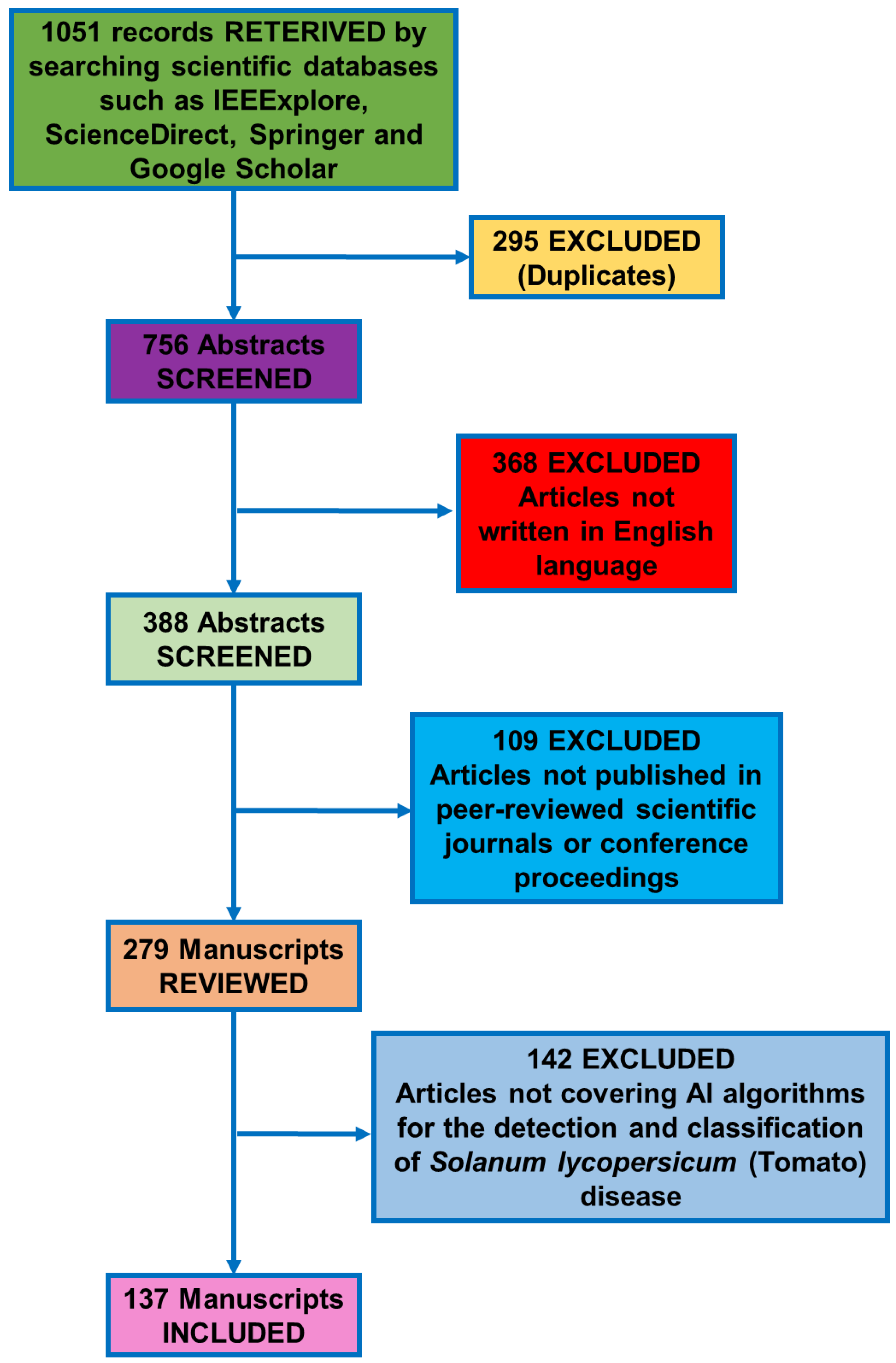
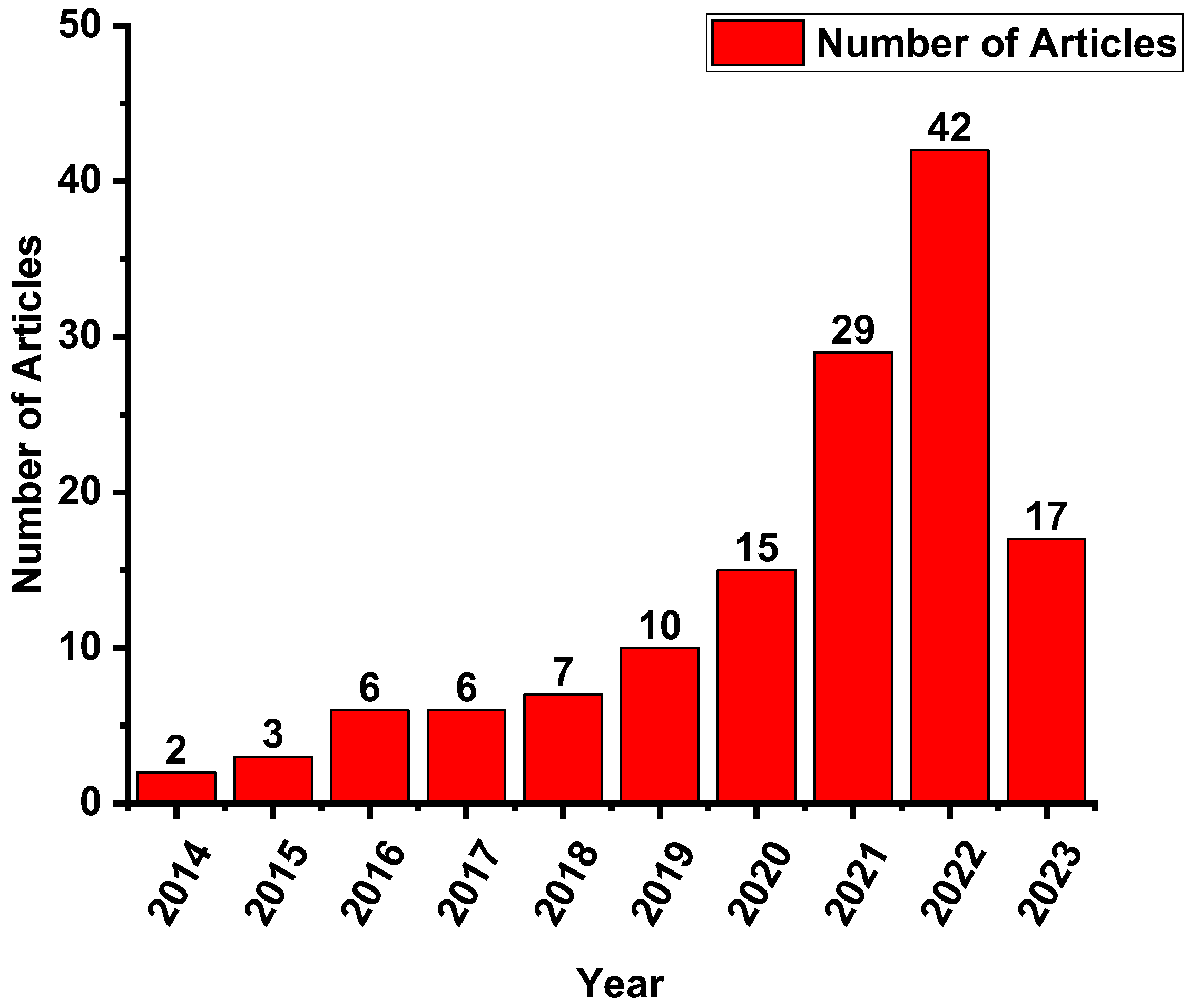
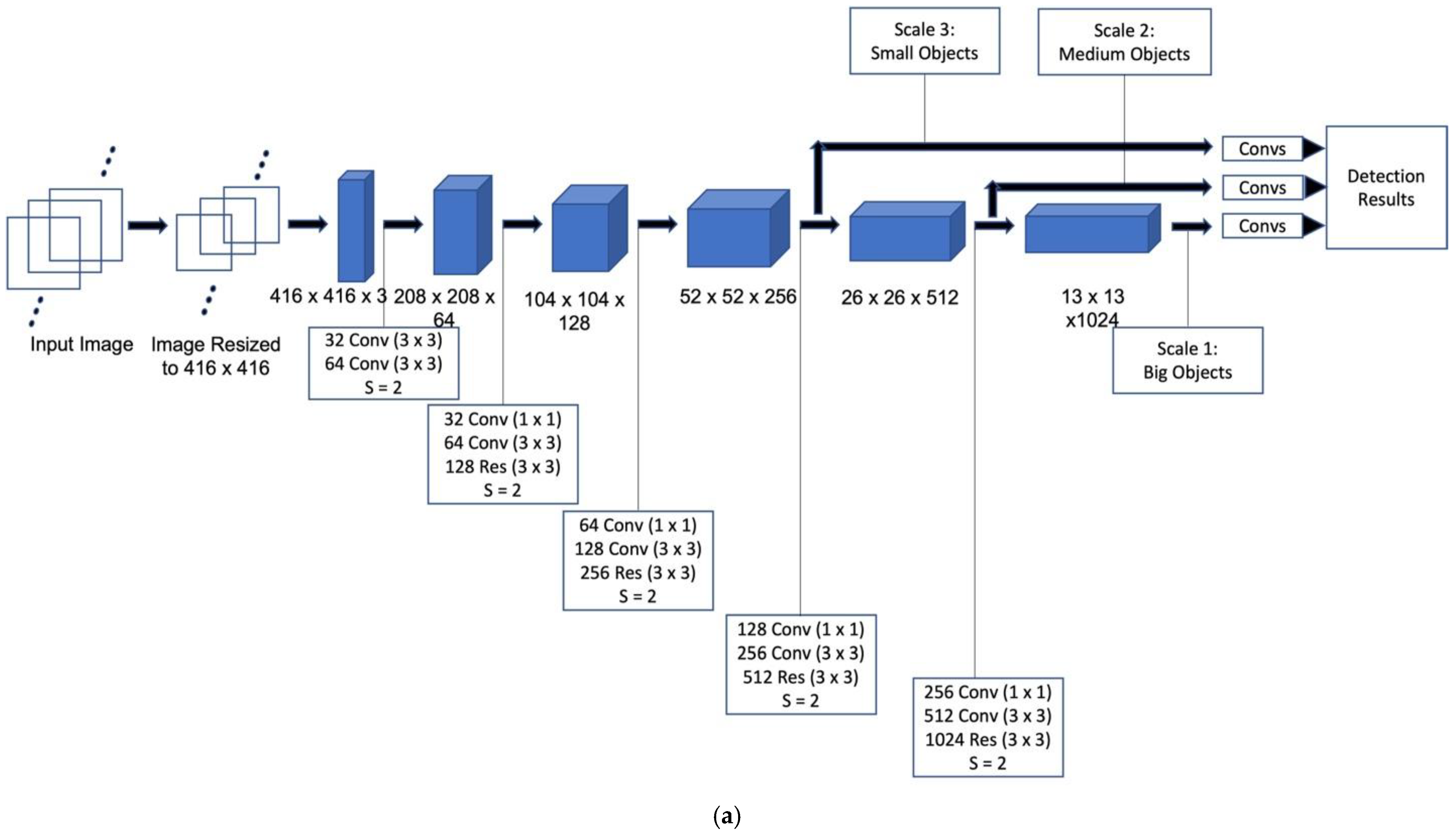
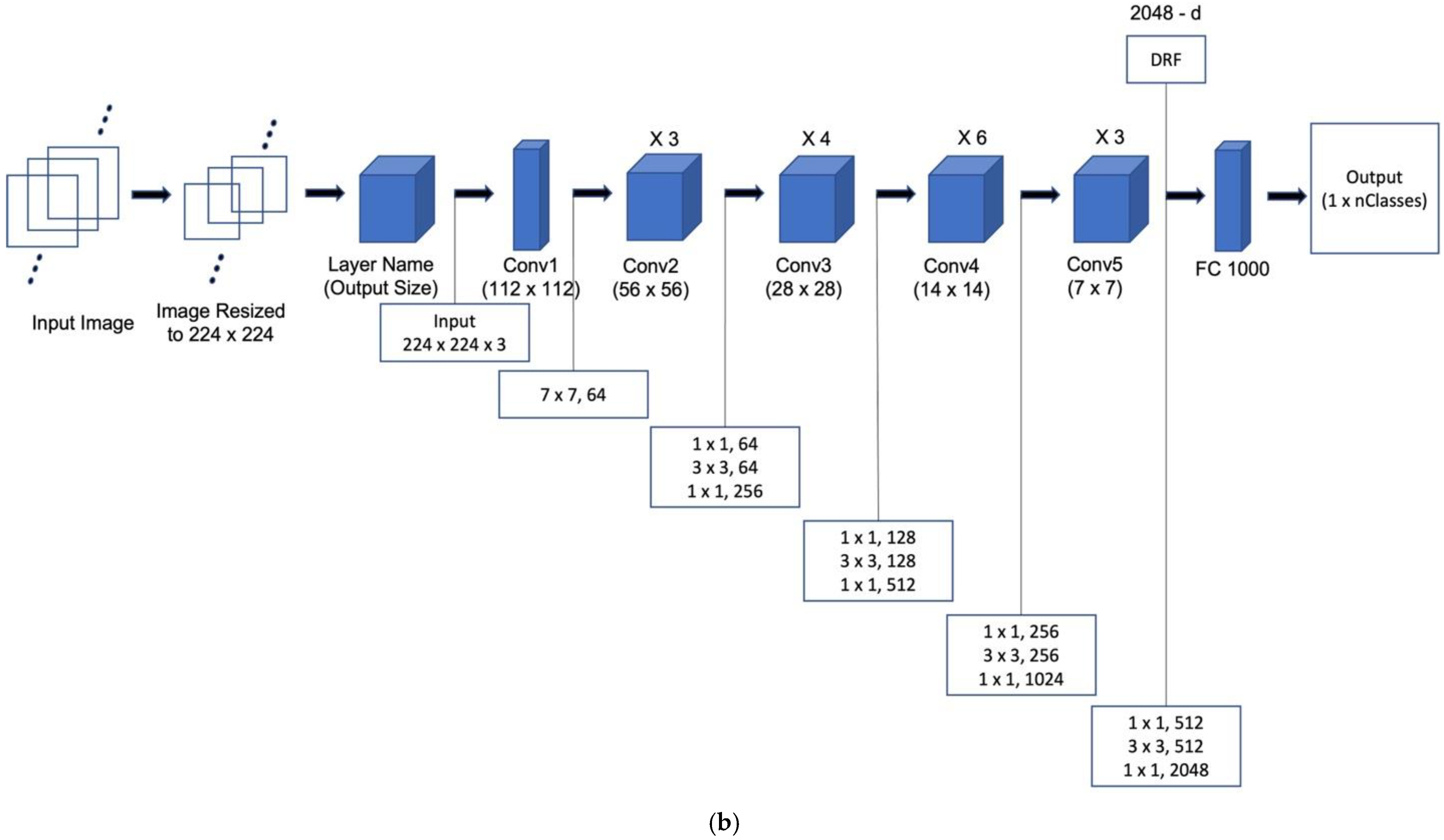

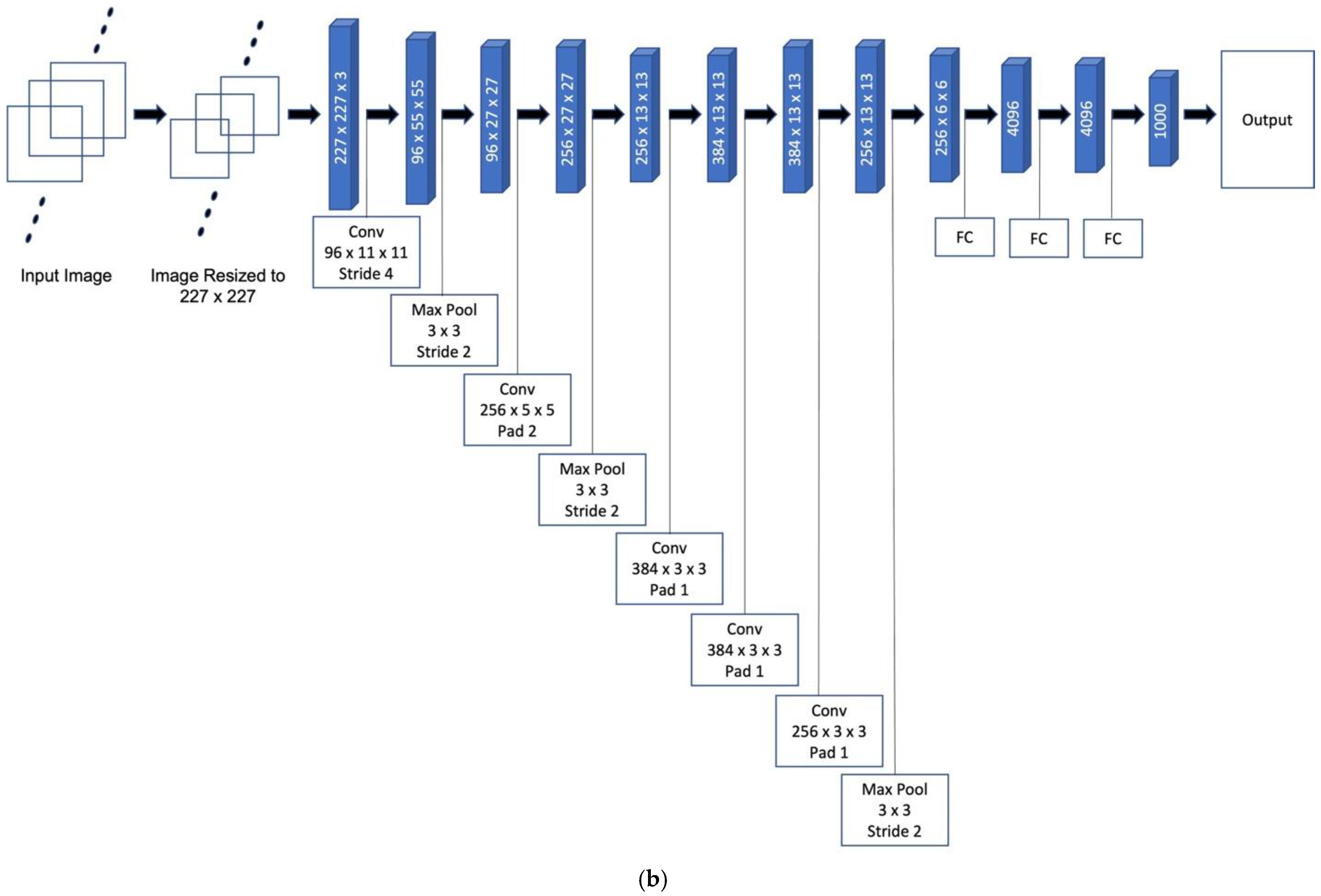
| Research Question |
|---|
| RQ1: What are the main contributions of the current studies for tomato leaf diseases? |
| RQ2: What diseases are being detected for tomato crops? |
| RQ3: What types of datasets have been used by the contributors of the current studies? |
| RQ4: What are the ML and DL algorithms used to detect and classify tomato plant diseases? |
| RQ5: What features are being used by the ML/DL techniques to recognize and classify tomato plant diseases? |
| RQ6: What are the challenges and trends in tomato plant disease detection? |
| Citations | Disease | Causal Agent | Symptoms | Sample Image |
|---|---|---|---|---|
| [34,35] | Tomato Early Blight | Alternaria solani | Leaves, stems, and fruits with circular or angular spots | 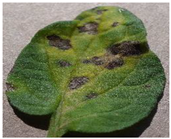 |
| [35,36] | Tomato Late Blight | Phytophthora infestans | Leaves and stems with large, water-soaked spots | 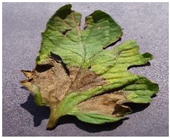 |
| [35,37] | Tomato Septoria Leaf Spot | Septoria lycopersici | Leaves and stems with circular, grayish-brown spots | 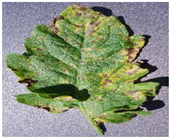 |
| [35,38] | Tomato Bacterial Spot | Xanthomonas perforans | Leaves and stems with large, water-soaked spots | 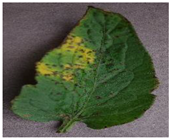 |
| [35,39] | Tomato Mosaic Virus | ToMV | Mottled yellowing of leaves, stunted growth, reduced yields | 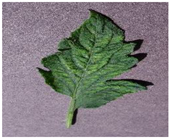 |
| [35,40] | Tomato Yellow Leaf Curl Virus | TYLCV | Yellowing and curling of leaves, stunted growth, reduced yield | 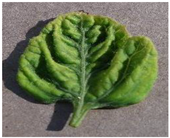 |
| [35,41] | Tomato Leaf Mold | Folipendula fusarium (previously known as Passalora fusarium) | Undersides of leaves and stems have moldy, gray-green lesions, decreased plant growth, reduced fruit production | 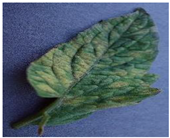 |
| [35,42] | Tomato Two Spotted Spider Mite | Tetranychus urticae | Yellowing and stippling of leaves, reduced plant growth and yields | 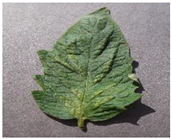 |
| [35,43] | Tomato Target Spot | Corynespora cassiicola | Leaves, stems, and fruit with circular, dark-brown to black lesions with concentric rings | 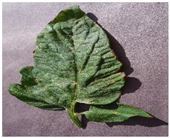 |
| Citations | Dataset | Type of Dataset |
|---|---|---|
| [7,19,21,22,27,31,46,47,48,49,50,51,52,53,54,55,56,57,58,59,60,61,62,63,64,65,66,67,68,69,70,71,72,73,74,75,76,77,78,79,80,81,82,83,84,85,86,87,88,89,90,91,92,93,94,95,96,97,98,99,100] | PlantVillage | Public |
| [101,102] | AIChallenger | Public |
| [17,18] | Own dataset | Public |
| [103] | Tomato Leaf Disease Detection | Public |
| [104] | Dataset of Tomato Leaves | Public |
| [105] | PlantVillage + Plant Disease Severity | Public |
| [106] | PlantVillage + New Plant Diseases | Public |
| [107] | PlantVillage + AIChallenger | Public |
| [33] | PlantVillage + AIChallenger + PlantDoc | Public |
| [32,108] | PlantVillage + PlantDoc | Public |
| [109,110,111,112,113,114,115,116,117] | PlantVillage + own dataset | Public + Private |
| [8,23,24,118,119,120,121,122,123,124,125,126,127] | Own dataset | Private |
| Reference | Algorithm | Accuracy (%) |
|---|---|---|
| [110] | EfficientNetB3 + LR | 100 |
| EfficientNetB3 + kNN | 100 | |
| EfficientNetB3 + RF | 100 | |
| EfficientNetB3 + SGB | 100 | |
| EfficientNetB3 + ADB | 100 | |
| [61] | DCGAN-PILAE | 100 |
| [76] | DENN + Transfer Learning | 100 |
| [72] | EfficientNetB3 | 99.997 |
| [72] | EfficientNetB5 | 99.997 |
| [77] | Custom CenterNet + DenseNet77 | 99.982 |
| [51] | ICRMBO (Improved Crossover-based Monarch Butterfly Optimization) + VGG16 | 99.98 |
| [78] | Faster R-CNN + ResNet34 | 99.97 |
| [51] | ICRMBO + InceptionV3 | 99.94 |
| [33] | ICVT | 99.94 |
| Reference | Features | Techniques |
|---|---|---|
| [23,24,26,48,49,56,58,62,63,69,85,97,122,127] | Texture | Haralick Features, LBP, GLCM, Law’s Mask, Spatial-wise Feature Extraction |
| Color | Color Histograms, Hue Saturation Value, Color Coherence Vector, Spatial-wise Feature Extraction | |
| Shape | Hu Moments, Spatial-wise Feature Extraction | |
| [27,52,83,94,102,106,113] | Texture | GLCM, Local Binary Pattern, Speeded Up Robust Features, Otsu’s Algorithm, Information Gain, Histogram of Oriented Gradients, Entropy |
| Color | Color Moment, Color Histogram, Color Histogram Combinations–LBP, GLCM, LBP + GLCM, COLOR, COLOR + LBP, COLOR + GLCM, ALL, Combined Genetic Algorithm, Correlation-based Feature Selection, K-means Clustering | |
| [54] | Texture | Scale Invariant Feature Transform (SIFT), GLCM |
| Edge | Harris Corner Detector | |
| [55] | Texture | CNN |
| Color | CNN | |
| Morphological | CRNN | |
| Sequential | CRNN | |
| Gradient-based | CRNN | |
| [91,103,125] | Color | Hyperspectral Imaging, L*a*b*, Hue Saturation Value, YCbCr, Luminance In-phase Quadrature (YIQ), Hue Saturation Intensity, CIELAB (International Commission on Illumination (CIE)) |
| [73] | Coefficients of LL Sub-band at Level 3 (Haar Wavelet) | 2D–Discrete Wavelet Transform |
| [19] | Vein | Morphological Opening |
| Texture | GLCM | |
| Haar-like Features | Canny Edge Detection | |
| Edge | Geometric Features | |
| Shape | Fourier Descriptors of Polar Fourier Transform | |
| [88] | Sub band images | Adaptive Analytic Wavelet Transform |
| [84,89] | Texture | SIFT, GLCM |
| [116] | Texture | CNN |
| Shape | Hue Saturation | |
| [108] | Texture | T-CNN |
| Shape | T-CNN | |
| Vein | T-CNN | |
| [117] | Minor Lesion | Location-wise Soft Attention Mechanism |
| [32] | Color | Hierarchical Bilinear Pooling |
| Shape | Hierarchical Bilinear Pooling |
Disclaimer/Publisher’s Note: The statements, opinions and data contained in all publications are solely those of the individual author(s) and contributor(s) and not of MDPI and/or the editor(s). MDPI and/or the editor(s) disclaim responsibility for any injury to people or property resulting from any ideas, methods, instructions or products referred to in the content. |
© 2023 by the authors. Licensee MDPI, Basel, Switzerland. This article is an open access article distributed under the terms and conditions of the Creative Commons Attribution (CC BY) license (https://creativecommons.org/licenses/by/4.0/).
Share and Cite
Sundararaman, B.; Jagdev, S.; Khatri, N. Transformative Role of Artificial Intelligence in Advancing Sustainable Tomato (Solanum lycopersicum) Disease Management for Global Food Security: A Comprehensive Review. Sustainability 2023, 15, 11681. https://doi.org/10.3390/su151511681
Sundararaman B, Jagdev S, Khatri N. Transformative Role of Artificial Intelligence in Advancing Sustainable Tomato (Solanum lycopersicum) Disease Management for Global Food Security: A Comprehensive Review. Sustainability. 2023; 15(15):11681. https://doi.org/10.3390/su151511681
Chicago/Turabian StyleSundararaman, Bharathwaaj, Siddhant Jagdev, and Narendra Khatri. 2023. "Transformative Role of Artificial Intelligence in Advancing Sustainable Tomato (Solanum lycopersicum) Disease Management for Global Food Security: A Comprehensive Review" Sustainability 15, no. 15: 11681. https://doi.org/10.3390/su151511681
APA StyleSundararaman, B., Jagdev, S., & Khatri, N. (2023). Transformative Role of Artificial Intelligence in Advancing Sustainable Tomato (Solanum lycopersicum) Disease Management for Global Food Security: A Comprehensive Review. Sustainability, 15(15), 11681. https://doi.org/10.3390/su151511681






